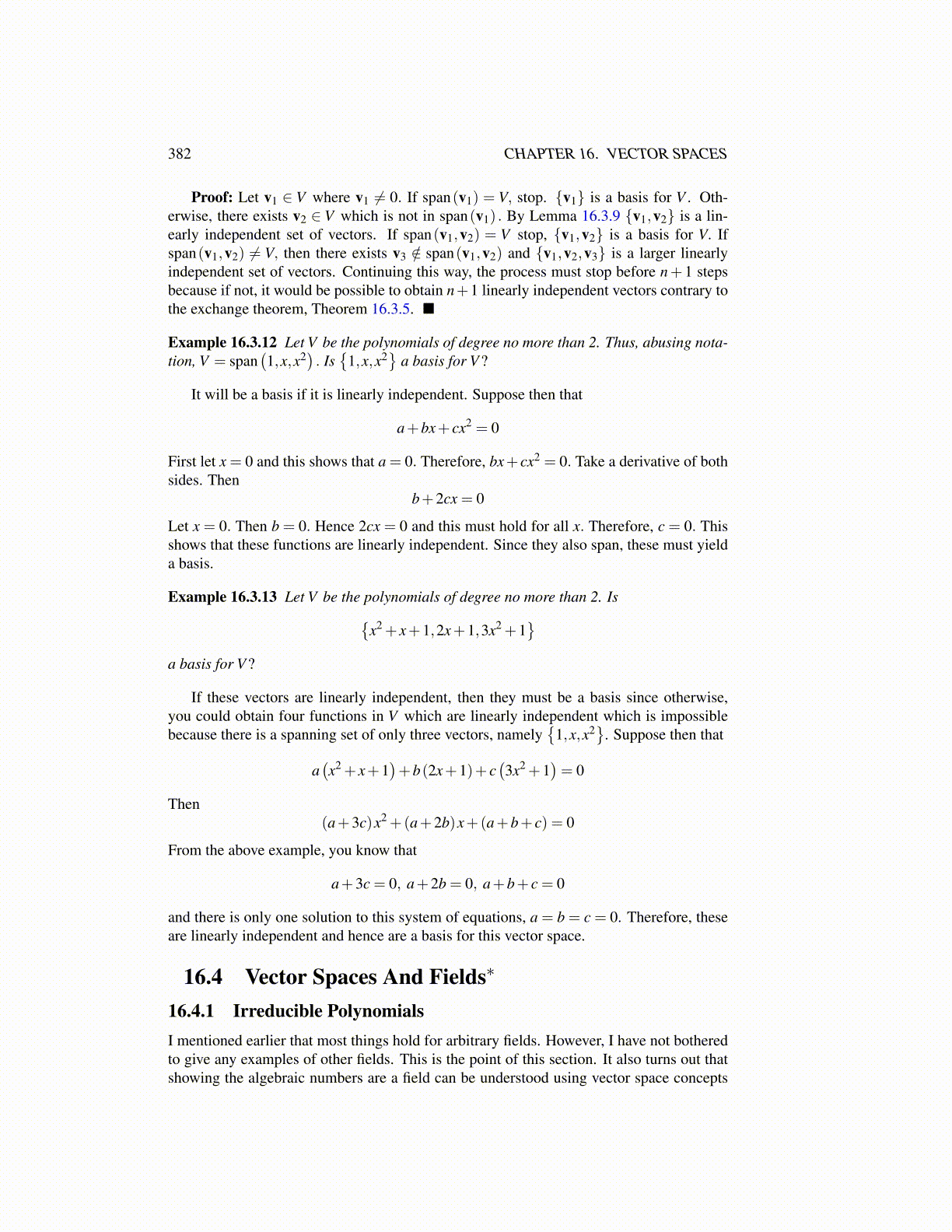
382 CHAPTER 16. VECTOR SPACES
Proof: Let v1 ∈ V where v1 ̸= 0. If span(v1) = V, stop. {v1} is a basis for V . Oth-erwise, there exists v2 ∈ V which is not in span(v1) . By Lemma 16.3.9 {v1,v2} is a lin-early independent set of vectors. If span(v1,v2) = V stop, {v1,v2} is a basis for V. Ifspan(v1,v2) ̸= V, then there exists v3 /∈ span(v1,v2) and {v1,v2,v3} is a larger linearlyindependent set of vectors. Continuing this way, the process must stop before n+ 1 stepsbecause if not, it would be possible to obtain n+1 linearly independent vectors contrary tothe exchange theorem, Theorem 16.3.5. ■
Example 16.3.12 Let V be the polynomials of degree no more than 2. Thus, abusing nota-tion, V = span
(1,x,x2
). Is{
1,x,x2}
a basis for V ?
It will be a basis if it is linearly independent. Suppose then that
a+bx+ cx2 = 0
First let x = 0 and this shows that a = 0. Therefore, bx+ cx2 = 0. Take a derivative of bothsides. Then
b+2cx = 0
Let x = 0. Then b = 0. Hence 2cx = 0 and this must hold for all x. Therefore, c = 0. Thisshows that these functions are linearly independent. Since they also span, these must yielda basis.
Example 16.3.13 Let V be the polynomials of degree no more than 2. Is{x2 + x+1,2x+1,3x2 +1
}a basis for V ?
If these vectors are linearly independent, then they must be a basis since otherwise,you could obtain four functions in V which are linearly independent which is impossiblebecause there is a spanning set of only three vectors, namely
{1,x,x2
}. Suppose then that
a(x2 + x+1
)+b(2x+1)+ c
(3x2 +1
)= 0
Then(a+3c)x2 +(a+2b)x+(a+b+ c) = 0
From the above example, you know that
a+3c = 0, a+2b = 0, a+b+ c = 0
and there is only one solution to this system of equations, a = b = c = 0. Therefore, theseare linearly independent and hence are a basis for this vector space.
16.4 Vector Spaces And Fields∗
16.4.1 Irreducible PolynomialsI mentioned earlier that most things hold for arbitrary fields. However, I have not botheredto give any examples of other fields. This is the point of this section. It also turns out thatshowing the algebraic numbers are a field can be understood using vector space concepts